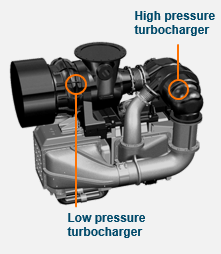here is a formula for calculating the firing sequence of v12 aircraft engines.
-In other words: the 720° needed, divided by the number of cylinders, equals the ignition angle (720 : 9 = 80°, twice 40° which is the geometric angle).
-Another story will be the case of a double star (C). First it must be noted that the crankshaft has a neck for each star and at 180°. In the figure, two crankshafts, the first for a single star and the other for a double star.
-The ignition for each star is the same as for a single star, but with 180º between them, giving us a very different ignition order. The numbering of the cylinders is done correlatively but jumping from one star to another. I have always used the same formula. Basically it is N : 2 + 2. Starting with 180 + 720 : N, clearing it out leads to the above formula:

-In which N is the number of cylinders, being a double star engine with 18 cylinders, the number of cylinders between ignitions is 11 (N:2=9+2), so the next cylinder to ignite will be 12, then 12+11, 23, or the same as 5. Then 5+11 will be 16. 16+11, etc.
let me say that I still don't understand the formula because I'm trying to figure out how to balance my accounts and resorber the ignition sequence with the formula if someone understood it please explain it to me by doing the formula thank you.



